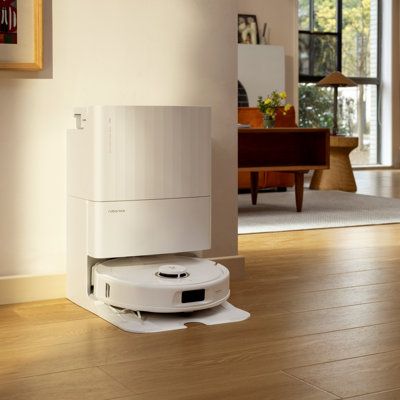Leaving a job means dealing with plenty of change, including saying bye to coworkers, packing up work life, oh yeah, and some more practical things you have to deal with, like what to do with your old 410(k) plan.
The good news: that money is still yours. It may be with your old employer, or maybe it’s in an IRA. But, wherever it is, if your money was invested, it should still be growing.
The other news is that leaving your old 401(k)s or IRAs behind typically is not a great idea. You’re going to forget about them. You’re not going to be watching them. The asset allocation will be off, and it’s going to potentially hurt you.
Ideally, you want to consolidate them in one place. But how? That’s where we can help.
Here’s what you need to know about the life-changing magic of tidying up your retirement plans.
You have four options when it comes to dealing with an old 401k account. It’s not always a clear-cut decision to make, but ideally, you want to consolidate them in one place. Here are your options:
1. Move the Money Into an IRA Rollover Account.
This is typically the smartest move. Ellevest, a new online investing platform for women can help do that for you so that you can bring them together, and you can keep an eye on them. You can monitor them, and for the right ones, you can still be investing in them.
When you move the money into an IRA rollover account, your money continues to grow tax-deferred, but you are no longer limited to the investment choices within your old plan. Make sure you choose “direct rollover” as the method for moving the money from your old employer into your new rollover IRA so you don’t get hit with taxes.
2. Move the Money Into your new Employer’s Plan.
This is an option, but you have to check with your new company: Not all defined contribution plans allow this move.
3 Leave the Money Right Where It Is.
You do have the option of leaving your funds in your old 401(k) plan, but there are a few downsides to doing that. One, you can no longer contribute to it; and two, you’ll have multiple 401(k) plans floating around you need to keep track of and that’s just confusing.
4. Cash Out and Take the Money as a Distribution.
This is not the best idea, because your money will no longer have the advantages of tax-deferred growth. Worse, you’ll pay income tax on the entire amount of the distribution, and you’ll be hit with a 10% early withdrawal penalty if you aren’t yet 59 ½ years old. In other words, don’t do it.

We like to cover all our bases here at Style Salute so here are a few other 401(k) related questions we get asked pretty often.
I’m New to Retirement Planning. Where Do I start?
If you’re new to the whole retirement thing, you can start fresh with Ellevest. Their friendly and knowledgeable concierge team can help you decide if it makes sense to move your money into an account at Ellevest. Or, if you have an existing IRA, you can transfer it over to an Ellevest account so you can pursue your unique retirement goals.
I’m Self-Employed: What Are My Retirement Options?
So you work for yourself — either full time or part time — and you’re totally killing it. Being the boss of you lets you work how you want, when you want, on the projects you want. You’re a master planner when it comes to the hustle. Now you’re ready to master-plan that retirement.
So, what are your retirement options? Good news: You have a lot of them.
You can choose from a Roth IRA, Traditional IRA (you don’t pay taxes on these funds until you withdraw the money), or a SEP-IRA. Each of these retirement plans has its own rules when it comes to contribution and withdrawal, so do your research before deciding on the best one for you.
What’s a SEP IRA and How Does It Work?
If that’s you, there’s a super-special type of IRA you should know about. It’s called a SEP IRA, and this is how it works.
I Have Lots of IRAs and old 401(k)s at different places. What Should I Do with Them?
“What should I do with all the 401(k)s from my old jobs?” Sallie Krawcheck, the founder and CEO of Ellevest, on the life-changing magic of tidying up your retirement plans.
How Do I Start My Rollover?
STEP 1: Once you sign up for a rollover, you’ll upload your former job’s most recent 401(k) plan statement and disclosures.
STEP 2: Ellevest then conducts a comprehensive analysis of your 401(k) and compares it to the Ellevest plan that they would recommend for you.
STEP 3: If you decide to move your account to Ellevest, you’ll call your provider and initiate the rollover (Ellevest can help with that call too).
STEP 4: Finally, when your rollover is complete, you’ll see your retirement accounts on one clear dashboard. Get started today.
Aside from a 401k, it’s important to consider other investment plans for your future. Only 46% of working women have retirement plans, and they’re falling short when it comes to investing as well. It’s time we close that gender investing gap and start taking control of our money. After all, as Ellevest CEO Sallie Krawcheck, whom I mentioned earlier says, “money is power.” Investing is your shot at growing your wealth, so why not take it?
It’s never too early to think about your retirement, and having the right plan for your 401k and other retirement accounts can make a huge difference when it comes to making your dream retirement a reality.

Here are more investing topics for you…
Why Women Should Invest and How to Get Started With Just $5
The Personal Finance Tips Everyone In Their 20s Should Follow
I’m Self-Employed: What Are My Retirement Options?
Questions? We’re here to help. Leave us a comment and we’ll get back to you!
Disclosures: We’re excited to be teaming up with the team at Ellevest to start this conversation about women and money. We may receive compensation if you become an Ellevest client.







